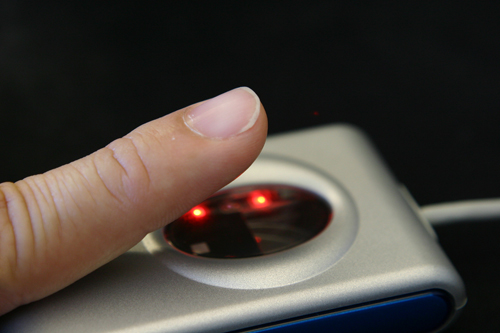 In the current fast-paced work environment, the efficiency and accuracy of timekeeping have become more critical than ever, especially with advanced time tracking software playing a pivotal role. Biometric time clocks present a contemporary solution, employing distinct physical characteristics such as fingerprints and facial recognition to monitor employee attendance. This article examines biometric time clocks and time clock systems, covering their functionality, various types, benefits, and potential concerns. It delves into how these systems can improve payroll accuracy and employee accountability, as well as identifying the industries that could benefit the most from their implementation.
In the current fast-paced work environment, the efficiency and accuracy of timekeeping have become more critical than ever, especially with advanced time tracking software playing a pivotal role. Biometric time clocks present a contemporary solution, employing distinct physical characteristics such as fingerprints and facial recognition to monitor employee attendance. This article examines biometric time clocks and time clock systems, covering their functionality, various types, benefits, and potential concerns. It delves into how these systems can improve payroll accuracy and employee accountability, as well as identifying the industries that could benefit the most from their implementation.
What Are Biometric Time Clocks?
Biometric time clocks represent sophisticated time tracking solutions that utilize biometric technology to improve employee attendance management. These systems employ unique identifiers, such as fingerprints, facial recognition, and retinal scans, to accurately record clocking in and out times, thereby significantly mitigating issues like buddy punching and employee time theft.
By establishing a secure employee database, biometric time clocks ensure that employee punch data remains confidential and resistant to tampering, thereby providing organizations with a dependable method for monitoring attendance. In an era where efficiency and accuracy are of utmost importance, these biometric systems are transforming the way businesses oversee employee time and attendance, offering innovative biometric options for HR integration.

6 Things You Need to Know About Biometric Time Clocks
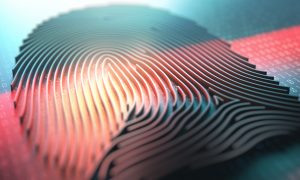 Are you considering implementing biometric time clocks for your business but remain unsure of how they work? Check out these great facts.
Are you considering implementing biometric time clocks for your business but remain unsure of how they work? Check out these great facts.
In today’s modern workplace paper time sheets and clock-in/clock-out time cards strike us all as outdated, but that isn’t the main problem with them. The real issue with these forms of tracking time is how much they cost employers.
Based on research published in 2017, employers could be losing more than $373 million each year because of a payroll loophole known as “buddy punching.” As the name suggests, buddy punching is when a friend or co-worker fills out time or punches a timecard for an employee who is absent or running late, allowing them to be paid for time even when they aren’t at work.
Modern payroll systems like biometric time clocks eliminate this issue, so if you haven’t already, you should consider them for your business.
Below, we’re breaking down the top six things you should know about biometric time clocks and how they can improve your business.
1. What Exactly Are Biometric Time Clocks?
Biometric time clocks are advanced systems that allow employers to track the time and attendance of their employees. They often do double duty as a way for employees to gain access to their building or office suite which also makes note of the date and time of their entrance.
2. How Do They Work?
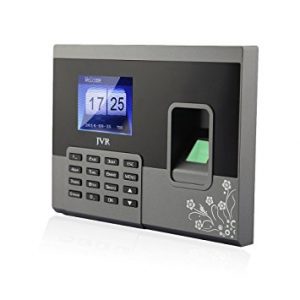 Some payroll systems rely on employees being given a means of tracking time, such as a work code or pin number. Biometric time clocks are different in that they rely on a unique physical attribute of the employee. For example, employees could be required to use a fingerprint scan as a means of “clocking in.”
Some payroll systems rely on employees being given a means of tracking time, such as a work code or pin number. Biometric time clocks are different in that they rely on a unique physical attribute of the employee. For example, employees could be required to use a fingerprint scan as a means of “clocking in.”
The scanner takes a high-quality image of the fingerprint of the employee attempting to gain access to the office. Images of fingerprints are never stored in the system, but rather record scans as a numerical string in order to identify the employee.
An identification can be made in less than one second and, if there is a match, then the employee will be granted access and the time and date of the entrance is noted.
The information is made available to the human resources department. In addition to being used for payroll, the stats from a biometric system can be evaluated to determine when an employee is eligible for sick leave or paid time off.
3. How Much Do They Cost?
 Because biometric time clocks make use of modern technology, many businesses assume that they are too expensive. In reality, biometric time clocks are reasonably priced and are designed to be affordable for both big companies and small businesses.
Because biometric time clocks make use of modern technology, many businesses assume that they are too expensive. In reality, biometric time clocks are reasonably priced and are designed to be affordable for both big companies and small businesses.
Costs will typically be based on your exact needs and can vary as additional services are added, but no matter what your budget, there is a way to make the system attainable for you.
It’s also important to keep in mind how much you’ll be saving in the long run by switching to biometric time clocks, as buddy punching and payroll fraud is eliminated.
4. How Reliable are Biometric Time Clocks?
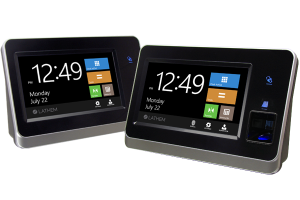 Physical traits obviously can’t be stolen, lost or left behind or forgotten somewhere. Because of that, using them as a means of time and attendance tracking is an extremely reliable solution for businesses that are looking to modernize their payroll system and introduce new technology.
Physical traits obviously can’t be stolen, lost or left behind or forgotten somewhere. Because of that, using them as a means of time and attendance tracking is an extremely reliable solution for businesses that are looking to modernize their payroll system and introduce new technology.
But still, there are questions about whether or not biometric time clocks can be cheated.
Like all technology, biometric systems have vulnerabilities and can be subject to the damage caused by computer hackers with ill-intentions. Software-based attacks are rare but are possible if the hacker is sophisticated enough or determined enough.
The truth is, though, hacks are the price you pay for any computer-based technology and the risk of a biometric hack is minimal. Since fingerprint information isn’t stored in the system, a hacker would have to have payroll fraud as their main goal in order to make targeting a biometric system worth it.
5. Are Biometric Time Clocks Easy to Implement?
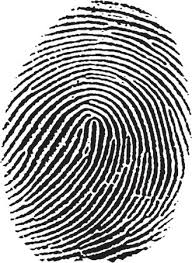 Most employees do not embrace change — particularly technology upgrades — with open arms. But enrolling employees in a biometric system is so easy that you shouldn’t be met with much resistance.
Most employees do not embrace change — particularly technology upgrades — with open arms. But enrolling employees in a biometric system is so easy that you shouldn’t be met with much resistance.
Employees are automatically enrolled from the first time they use the system. The process is simple for managers too, who can add or remove enrollees from the system on their own computers at their desks.
As an employer, you also have the ability to choose which employees you want using a biometrics system or a specific office location where you want it installed. It does not have to be used throughout everyone at the company. That makes it easy to roll the change out in stages, or to test it with a small group of employees before switching everyone over.
6. What are the Potential Downsides to Implementing Fingerprint Clock System?
Hopefully, you now have a good sense of the pros of switching to a biometric time clock, but it’s important to understand where resistance to the system might come from.
At first, employees may be concerned about a violation of privacy when they’re being asked to identify themselves based on physical attributes. The important thing to note, and to relay to them, is that the system does not actually store any of their identifying information.
Occasional false-positive can happen too. This could result is someone gaining access to the building who is not supposed to be there, or a valid employee being kept out. False-positives are rare, but can happen, and technicians should be available to analyze the technology if they do happen.

How Do Biometric Time Clocks Work?
Biometric time clocks function by employing biometric verification methods, including time clock operations, to authenticate employees during their clock-in and clock-out procedures. This process entails the capture of biometric data through various modalities, including fingerprint scanners, facial recognition technology, or hand geometry readers, which is subsequently matched against a secure database.
The automation of this process not only enhances accuracy but also ensures that access data is securely stored and safeguarded against unauthorized access. By removing the need for manual input, biometric time clocks streamline attendance tracking and significantly reduce the risk of errors and employee time theft through an automated process.
What Are the Different Types of Biometric Time Clocks?
There exists a variety of biometric time clocks, each employing distinct biometric verification technologies to accurately capture employee attendance. Among the most prevalent devices are fingerprint scanners, which read unique fingerprint patterns, and facial recognition systems, which analyze facial features to authenticate identity, offering a comprehensive biometric identification framework. Hand geometry readers evaluate the shape of an individual’s hand, while retinal and iris scanners offer even more advanced methods of identity verification. These diverse biometric solutions cater to different organizational needs and preferences, allowing companies to select a system that best aligns with their attendance tracking requirements, including biometric attendance strategies.
In the context of contemporary workforce management, the integration of biometric time clocks can significantly enhance operational efficiency and improve overall accountability. Each type of biometric clock addresses specific challenges associated with attendance tracking and employee information management:
- Fingerprint scanners: These devices are widely utilized due to their cost-effectiveness and reliability, making them suitable for businesses that require a quick and straightforward clock-in process.
- Facial recognition systems: These advanced cameras enhance security, making them appropriate for environments where accuracy and fraud prevention are paramount, particularly in high-security areas like government bunkers.
- Hand geometry readers: These are ideal for workplaces with variable temperature conditions or where hand injuries are prevalent, as they do not necessitate direct contact.
- Retinal and iris scanners: These systems provide a high level of security and are best suited for sensitive operations, ensuring that only authorized personnel can clock in, emphasizing privacy concerns and secure access.
The implementation of such systems can lead to increased employee efficiency, streamlined payroll processes, and a reduction in instances of time theft, ultimately contributing to enhanced organizational productivity and improved employee productivity levels.
How Accurate Are Biometric Time Clocks?
Biometric time clocks are recognized for their exceptional accuracy and secure employee database features, primarily attributable to their use of biometric identification methods that effectively mitigate common attendance challenges.
By relying on unique identifiers such as fingerprints or facial features, these systems significantly minimize the errors associated with traditional time tracking approaches. This level of accuracy ensures that employee punch data is both reliable and trustworthy, which is vital for maintaining an efficient payroll system and ensuring compliance with labor regulations through effective time management.
However, various factors can influence the performance of these systems, potentially leading to discrepancies in accuracy. Environmental conditions, including lighting and humidity, can affect sensor functionality, while the quality of the underlying technology is also critical. User compliance represents another significant factor; if employees do not adhere to the established procedures when utilizing the system, inaccuracies may occur.
Research has demonstrated that biometric systems achieve an accuracy rate exceeding 99%, offering precise digital representation of employee punch data, in contrast to traditional methods, which may exhibit error rates as high as 15% due to manual entry mistakes. This notable disparity underscores the increasing preference for biometric solutions in contemporary workplaces.

What Are the Benefits of Using Biometric Time Clocks?
Utilizing biometric time clocks presents numerous advantages, including enhanced employee database security, for organizations seeking to enhance their time tracking solutions and improve overall efficiency. A primary benefit is the significant reduction of employee time theft, which can occur through practices such as buddy punching and inaccurate reporting.
By verifying each clocking in and out through biometric identification and comprehensive time tracking needs, organizations can substantially minimize errors in time tracking, thereby increasing employee accountability and enhancing payroll accuracy. Moreover, these systems function as effective productivity tools, offering real-time analytics and comprehensive attendance data that facilitate knowledge-based decision making, integrating seamlessly with time and attendance software.
Eliminates Time Theft
One of the most significant advantages of biometric time clocks is their capability to effectively eliminate time theft, a prevalent issue within traditional time tracking systems.
Time theft can result in considerable financial losses for businesses, with estimates indicating that organizations may incur losses of up to 7% of their payroll due to such practices. This concerning statistic highlights the critical need for implementing robust tracking measures.
For example, a case study conducted by a mid-sized manufacturing firm demonstrated the effectiveness of biometric technologies, that after the implementation of biometric systems, incidents of time theft decreased by over 30%, leading to a substantial improvement in the company’s bottom line. Moreover, employees exhibited a heightened sense of accountability, which resulted in increased productivity levels and enhanced morale among the workforce, improving employee efficiency.
Regular audits conducted following the implementation revealed a remarkable 40% reduction in payroll discrepancies, underscoring the role of biometric technology in secure access control and resource management. This data not only underscores the effectiveness of biometric technology in mitigating time theft but also emphasizes the overall positive implications for organizational integrity, resource management, and secure employee database connectivity.
Reduces Errors in Time Tracking
Biometric time clocks substantially reduce errors in time tracking by automating the clocking in and out process through reliable biometric systems, integrating online time tracking capabilities. Unlike traditional methods that depend on manual input or punch cards, these systems ensure that each recorded time entry is directly associated with a verified identity using biometric data. This automation enhances accuracy and minimizes the potential for human error, which can lead to payroll discrepancies and inconsistent employee records, reinforcing the importance of biometrics in accurate identity verification.
Traditional timekeeping methods frequently encounter challenges such as buddy punching, where one employee clocks in for another, resulting in inflated labor costs and inaccurate attendance records. Additionally, manual data entry can introduce clerical errors that affect payroll accuracy and diminish employee trust.
In contrast, biometric time clocks utilize fingerprints, facial recognition, or iris scans, offering a robust solution to these challenges, and providing effective biometric attendance management. The implementation of biometric systems has been demonstrated to reduce errors by approximately 95%, ensuring secure employee database practices, indicating a significant enhancement in time tracking precision. Furthermore, one study revealed that a company transitioning to biometric systems reported a 30% decrease in payroll discrepancies within the first quarter.
This shift towards biometric technology not only streamlines the timekeeping process, enhancing access control measures, but also promotes employee accountability and integrity, ultimately contributing to a more trustworthy work environment, aligning with modern time tracking solutions.
Increases Employee Accountability
By implementing biometric time clocks and HR integration, organizations can enhance employee accountability in attendance tracking. The real-time functionality of these systems enables managers to effectively monitor employee clocking in and out, thereby ensuring that each individual is held responsible for their attendance. With additional features such as GPS capability, these systems are further enhanced. With biometric data securely stored using secure data storage solutions, companies can easily identify attendance patterns and address any discrepancies that arise, fostering a culture of responsibility among employees.
Moreover, the adoption of such technology instills a sense of ownership among staff, as they recognize the direct impact of their punctuality. This enhanced accountability can significantly improve workplace morale, as employees experience recognition and potential incentives for their commitment to attendance.
For instance, a technology company that implemented biometric systems reported a 25% reduction in tardiness after just three months. Similarly, a manufacturing firm that integrated peer review processes with time tracking observed a 15% increase in overall productivity.
These outcomes demonstrate that when employees perceive themselves as accountable, they are more inclined to contribute positively to their work environment, thereby enhancing both morale and productivity.
Improves Payroll Accuracy
Payroll accuracy is significantly enhanced through the implementation of biometric time clocks, as these systems provide precise employee punch data that eliminates human error.
By accurately tracking time using biometric verification methods such as fingerprint scanners or facial recognition, organizations can ensure that employees receive compensation for the exact hours worked. This not only fosters trust between employees and management but also contributes to the establishment of a more secure employee database, which is crucial for compliance and auditing purposes.
Enhanced payroll accuracy can result in increased employee satisfaction, as individuals feel valued when their contributions are recognized accurately, thus integrating well with modern payroll systems. A reduction in payroll disputes leads to a more harmonious workplace, enabling employees to concentrate on their responsibilities rather than addressing compensation issues.
For example, a manufacturing company that implemented biometric systems reported a 40% reduction in payroll errors over a six-month period, resulting in a significant increase in employee retention. When workers have confidence in their employer’s ability to manage wages fairly, they are more likely to remain committed and engaged with the organization, thereby fostering a stable and productive work environment.

What Are the Concerns with Biometric Time Clocks?
While biometric time clocks provide significant advantages, several concerns must be addressed to ensure their successful implementation in the workplace.
Privacy issues are paramount, as employees may have apprehensions regarding the collection and storage of their biometric data, such as fingerprints or facial recognition scans. Furthermore, there is the possibility of false positives, where the system inaccurately identifies an employee, resulting in frustration and a decrease in operational efficiency.
Lastly, the financial implications of implementing these biometric systems can be considerable, prompting some organizations to hesitate in transitioning from traditional time-tracking methods, especially when considering business process outsourcing and managed service provider options.
Privacy Concerns
Privacy concerns related to biometric time clocks primarily stem from the sensitive nature of the biometric data collected, such as fingerprints or facial scans. Employees may have legitimate concerns regarding the storage of their data, the individuals or entities that have access to it, and the measures implemented to protect it from potential breaches. Therefore, it is essential for organizations to establish robust data security protocols to alleviate these concerns and build trust among employees.
Organizations should prioritize transparency in data collection and storage practices to establish a foundation of trust. It is imperative that they:
- Clearly communicate policies regarding data usage and user consent, ensuring that employees understand what data is being collected and for what purposes.
- Implement strong encryption methods to protect biometric information and regularly update security measures in accordance with technological advancements.
- Conduct regular audits and assessments to identify any vulnerabilities within their data management systems.
- Provide employees with easy access to their data, enabling them to review and request the deletion of their biometric information should they choose to do so.
By adhering to these best practices, organizations can effectively protect sensitive data while also addressing employee privacy concerns in a proactive and responsible manner.
Potential for False Positives
One significant drawback of biometric time clocks is the potential for false positives, which may occur when the system erroneously verifies an individual as an authorized user. This issue can lead to delays and inefficiencies, particularly in fast-paced work environments where employees depend on rapid clocking in and out. It is imperative to ensure that biometric systems are correctly calibrated and regularly maintained to minimize these errors and enhance the overall reliability of identity verification.
The implications of these false positives extend beyond mere inconvenience; they can considerably affect employee morale and operational efficiency. For example, when employees frequently encounter delays due to misidentification, it can result in frustration and decreased job satisfaction. Some organizations have reported that erroneous verifications can foster an atmosphere of mistrust, leading employees to feel as though their integrity is under scrutiny.
To address this issue, businesses have instituted regular feedback sessions to gain a better understanding of employee concerns. Additionally, enhancing biometric technology by integrating multiple identification factors, such as combining fingerprint and facial recognition, has demonstrated potential in reducing the occurrence of false positives.
The resulting improvements in accuracy not only streamline workflows but also contribute to a more positive work environment, thereby making employees feel more valued and respected.
Cost of Implementation
The cost associated with implementing biometric time clocks is a significant concern for many organizations, particularly for smaller businesses operating with limited budgets. The initial investment required for biometric systems—including both hardware and software—along with ongoing maintenance costs, may dissuade some companies from adopting this technology. Therefore, it is essential to evaluate the long-term benefits, such as improved accuracy and reduced employee time theft, against the initial expenses in order to make an informed decision.
A crucial aspect to consider is the potential return on investment (ROI) that can result from transitioning to this system.
- Organizations often report a decrease in instances of time theft, which is a prevalent issue for businesses that rely on manual timekeeping methods, thus improving clocking in/out processes.
- By automating and securing the clock-in and clock-out processes, companies can significantly enhance payroll accuracy.
For instance, companies across various sectors, including retail and manufacturing, have documented clear financial benefits arising from their biometric systems, with many reporting that their investments were recouped within a year due to fewer payroll discrepancies and enhanced employee accountability. Adopting biometric technology can not only streamline operations but also contribute to cost-saving initiatives, making it a valuable consideration for any organization evaluating its options.

How Can Companies Ensure the Safety and Security of Biometric Data?
To ensure the safety and security of biometric data, organizations must implement comprehensive data security measures that protect sensitive employee information from unauthorized access and breaches. This includes the use of secure storage solutions, such as encryption and secure employee databases, along with regular audits and assessments to identify potential vulnerabilities. By prioritizing data security, organizations can build trust among employees and ensure compliance with data protection regulations.
Organizations can adopt a range of security protocols that extend beyond basic measures to strengthen their defenses. Key practices include:
- Multi-Factor Authentication: This additional layer requires users to verify their identity through multiple methods, significantly reducing the risk of unauthorized access.
- Access Controls: Limiting access to biometric data to only those employees who require it for their job functions minimizes exposure to potential breaches.
- Regular Training: Ongoing employee education regarding the importance of data security and privacy ensures that staff are aware of their responsibilities in protecting sensitive information.
By fostering a culture of security awareness, organizations not only enhance their data protection strategies but also enable employees to take responsibility for safeguarding both their own and the company’s sensitive data.
What Industries Benefit Most from Biometric Time Clocks?
Biometric time clocks offer significant advantages across various industries, especially those that emphasize enhanced security and employee productivity. Sectors such as healthcare, manufacturing, and finance frequently encounter challenges associated with attendance tracking, time theft, and employee accountability. Companies using Hubstaff find these systems particularly beneficial.
The adoption of biometric time clocks in these industries can lead to improved time tracking solutions, greater payroll accuracy, and strengthened security measures, ultimately fostering a more efficient workplace environment.
What Factors Should Companies Consider When Choosing a Biometric Time Clock System?
When selecting a biometric time clock system, organizations should take into account several essential factors to ensure that the solution effectively meets their employee tracking requirements and aligns with their organizational objectives.
Key considerations include the various types of biometric technology available, such as fingerprint scanners and facial recognition systems, as well as the ease of integration with existing human resources and payroll systems.
Furthermore, organizations should assess the reliability, accuracy, and cost-effectiveness of potential systems, including their HR integration capabilities, to facilitate a knowledge-based decision making process.
How Do Biometric Time Clocks Compare to Traditional Time Clock Systems?
Biometric time clocks signify a substantial advancement over traditional time clock systems, providing improved efficiency, accuracy, and accountability among employees. In contrast to conventional methods that depend on manual entries or punch cards, biometric systems utilize biometric verification technologies, such as fingerprint or facial recognition, to ensure precise attendance tracking.
This transition not only mitigates the potential for time theft and inaccuracies but also fosters a heightened sense of responsibility among employees concerning their attendance.

Ready to Consider a Biometric Time Clock?
If you’ve relied on paper time sheets or punch cards for a long time, making the switch to a biometric time clock might seem like a big investment.
But having a reliable employee attendance record is well worth it, especially when you consider that the cost is affordable and the installation is easy.
If you’re ready to cut down on buddy punching and time card fraud and switch to a more reliable system, please feel free to contact us for a quote.
Our team is ready to work with your company to determine the best system for your needs.


